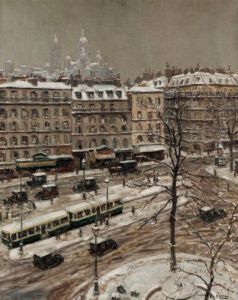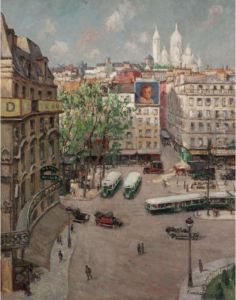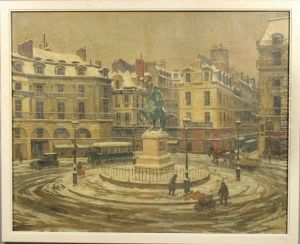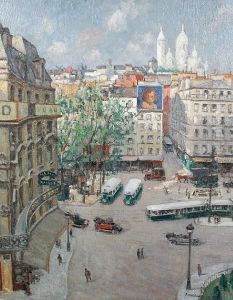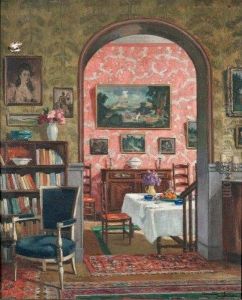Lucien Lievre Paintings
Lucien Lévy-Dhurmer, born Lucien Lévy, was a French Symbolist/Art Nouveau artist whose work spanned a variety of media including painting, drawing, ceramics, furniture and interior design. He was born on September 30, 1866, in Algiers, French Algeria, to Jewish parents. As a young man, he moved to Paris to pursue his artistic ambitions, and in 1887, he began working at the Sèvres porcelain factory where he became known for his innovative ceramic work. His style at Sèvres was characterized by a revival of classical techniques combined with a Symbolist approach to subject matter.
In the 1890s, Lévy-Dhurmer turned to pastels and painting, becoming a central figure in the French Symbolist movement. His work from this period is notable for its mystical atmosphere, dreamlike qualities, and often featured themes of love, death, and the metaphysical. His most famous painting, 'The Silence', created in 1895, encapsulates the essence of Symbolist art with its enigmatic subject enveloped in a silent, contemplative atmosphere.
Lévy-Dhurmer traveled extensively, which influenced his art as he incorporated elements from different cultures into his work. A trip to Italy in 1896 led to a series of landscapes and portraits that demonstrated his evolving style, incorporating Renaissance influences. He also explored other mediums, such as furniture design, where he combined his Symbolist aesthetic with Art Nouveau's flowing lines.
Throughout his career, Lévy-Dhurmer participated in various exhibitions, including the Salon de la Rose+Croix. His work received positive critical attention for its emotional depth and technical proficiency. He continued to work and exhibit into the 20th century, although his later work is less well-known than his Symbolist period creations.
Lévy-Dhurmer's contribution to the art world was significant; he helped to bridge the gap between traditional decorative arts and the fine arts, infusing his work with a poetic and emotional resonance that was characteristic of the Symbolist movement. He passed away on September 24, 1947, in Le Vésinet, France, leaving behind a legacy of work that continues to be appreciated for its beauty and complexity.
